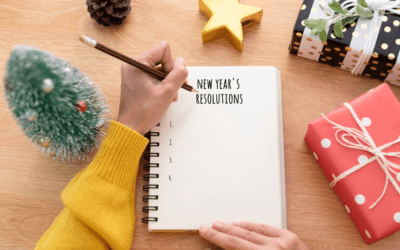Presentation Skills
Innovative Methods for Enhancing Presentation and Public Speaking Skills
“I stay in Chembur. And wasn’t aware about their workshops on presentation skills, until recently, when I was desperately searching for someone who could help me prepare for a presesnation at a company conference. I came here to learn how to present and came out learning much more than just presentation skills! Last month, at the All India Meet of my company, I could finally apply what I had learnt about from this workshop. My boss was very impressed with the quality of my talk. Thank you GC!” – Proficient Apprentice
Contrary to the usual belief, having a gift of the gab does not necessarily mean that the person will be a great presenter. Effective presentation skills need not be possessed only by a certain special few. It can be certainly developed and mastered with practice.
- It begins with the task of overcoming the fear of speaking in public and helps in getting into the mode of being a performer.
- The intricacies of becoming a good presenter will also require the individual to learn the basics of communication, body language, etc.
- A good presenter is aware of the art of the appropriate expression, delivers the essence in the stipulated time and usually gives a commendable performance.
Improve Presentation Skills & Public Speaking Skills Development
Development of skills like an aesthetic demonstration of your ideas, adopting a correlative approach, power of expression, etc. is offered. These skills need not be always associated only with a white-collar job. Today basic presentation skills are required in various other employments too. The world is progressing so rapidly, providing more and more opportunities and choices. Survival in the service industry largely depends on sustaining a raging competitive spirit to be the best.
Therefore, the impressive execution of your ideas in order to engage the interest of the customer has become a necessity. Hence, these attributes developed in our workshops could be useful for so many different levels of job profiles in an organization, students, and even homemakers who plan to be associated with network marketing.
Frequently Asked Questions (FAQs) About Presentation Skills & Public Speaking Skills Development
Why are presentation and public speaking skills critical?
These skills are crucial for success in both personal and professional life. They help you articulate ideas clearly, engage audiences, build credibility, and influence decisions. Whether it’s a classroom presentation, a business pitch, or a community event, the ability to communicate effectively can open doors and propel your success.
What are the critical elements of an effective presentation?
- Compelling Content: Well-researched, organized, and relevant information.
- Clear Structure: A logical flow with a strong opening, main points, and a memorable conclusion.
- Engaging Delivery: Confident body language, vocal variety, and eye contact.
- Visual Aids: Clear and impactful visuals (slides, props, etc.) that support your message.
- Audience Connection: Understanding your audience and tailoring your message to resonate with them.
How can I overcome my fear of public speaking?
Many people experience anxiety before speaking in public. We can help you develop strategies to manage those nerves, such as:
- Preparation: knowing your material thoroughly.
- Practice: Rehearsing your delivery in front of a mirror or friends.
- Positive self-talk: replacing negative thoughts with positive affirmations.
- Visualization: imagining yourself delivering a successful presentation.
- Relaxation techniques: deep breathing or meditation before speaking.
What are some tips for creating engaging presentations?
- Tell a story. Weave your information into a compelling narrative.
- Use humor. Appropriate humor can break the ice and engage your audience.
- Interact with your audience: Ask questions, use polls, or encourage discussion.
- Vary your delivery: Use different tones, pacing, and gestures to engage your audience.
- Practice storytelling: Use anecdotes or personal experiences to illustrate your points.
How can I improve my body language during presentations?
- Maintain good posture: stand tall with shoulders back and feet shoulder-width apart.
- Make eye contact: Connect with your audience by making eye contact with different individuals.
- Use gestures naturally. Avoid fidgeting or excessive hand movements.
- Move purposefully: Use movement to transition between points or engage different parts of the audience.
- Smile and show enthusiasm. Your facial expressions can convey your passion and interest in the topic.
How can I improve my voice modulation during presentations?
- Vary your pitch. Avoid speaking in monotone. Use inflection to emphasize key points.
- Adjust your volume. Speak loud enough for everyone to hear, but don’t shout.
- Pace yourself: Speak at a comfortable pace that allows your audience to follow along.
- Pause for effect: Use pauses to emphasize transitions or critical ideas.
What are some tips for designing effective visual aids?
- Please keep it simple. Use clear fonts, concise text, and high-quality images.
- Avoid clutter: Don’t overload your slides with too much information.
- Use visuals to illustrate your points: Charts, graphs, and diagrams can help explain complex information.
- Choose colors wisely. Use a color scheme that is easy on the eyes and complements your message.
How can I handle Q&A sessions effectively?
- Anticipate questions: Prepare answers to potential questions in advance.
- Listen carefully: Make sure you understand the question before answering.
- Be concise. Answer questions directly and avoid rambling.
- Acknowledge all questions: Thank the questioner for their contribution.
- Admit if you don’t know: It’s okay to say you don’t have the answer, but offer to find out.
What are some tips for virtual presentations?
- Check your technology. Make sure your internet connection, camera, and microphone are working correctly.
- Practice with the platform: Familiarize yourself with the video conferencing software you’ll use.
- Engage your audience. Use interactive features like polls and chat to keep your audience involved.
- Maintain eye contact: Look directly at the camera to simulate eye contact with your audience.
How can Growth Center help me improve my presentation skills?
We offer personalized coaching and workshops on presentation and public speaking skills. Our experienced trainers will provide tailored feedback, guidance, and practice opportunities to help you become a confident and effective communicator.
How can I tailor my presentation to different audiences?
Understanding your audience is crucial. Consider their age, background, knowledge level, and interests. Adjust your language, examples, and level of detail accordingly. For technical audiences, use more jargon and data. For general audiences, focus on clear explanations and relatable examples. Tailor your visuals and humor to resonate with your specific audience.
What are some strategies for handling stage fright?
Stage fright is natural, but it can be managed. Here are some tips:
- Practice, practice, practice: The more familiar you are with your material, the more confident you’ll feel.
- Prepare for the worst. Think about potential challenges (technical glitches, difficult questions) and have backup plans in place.
- Focus on your breathing. Take deep breaths to calm your nerves before and during your presentation.
- Start strong: A confident opening can help you settle in and engage your audience.
- Remember, it’s okay to make mistakes. Everyone makes mistakes. Just acknowledge them and move on.
How can I use storytelling effectively in my presentations?
Stories are powerful tools for capturing attention, making information memorable, and connecting with your audience on an emotional level. Weave relevant anecdotes, personal experiences, or case studies into your presentation to illustrate your points and make your message resonate.
What are some joint presentation mistakes to avoid?
- Reading from slides: Engage your audience by speaking naturally and making eye contact.
- Overloading slides with text: Use visuals to support your message, not replace it.
- Speaking too quickly or quietly: Pace yourself and project your voice so everyone can hear.
- Ignoring your audience: Be mindful of their reactions and adjust your delivery accordingly.
- Ending abruptly: Conclude with a strong summary and call to action.
How can I improve my impromptu speaking skills?
Impromptu speaking can be nerve-wracking, but practice can help you become more comfortable. Try these tips:
- Focus on structure: organize your thoughts into a clear beginning, middle, and end.
- Use examples: Illustrate your points with real-world examples or anecdotes.
- Keep it brief: Get to your main point quickly and avoid rambling.
- Feel free to pause. Take a moment to gather your thoughts, if needed.
How can I use humor effectively in my presentations?
Humor can be a great way to engage your audience, but it’s essential to use it appropriately. Keep it relevant to your topic, avoid offensive jokes, and be mindful of your audience’s cultural sensitivities.
What are some tips for delivering persuasive presentations?
- Know your audience. Tailor your message to their needs and interests.
- Establish credibility: Demonstrate your expertise and knowledge.
- Use strong evidence. Support your claims with facts, statistics, and examples.
- Appeal to emotions: Connect with your audience on an emotional level.
- Call to action: Tell your audience what you want them to do.
How can I evaluate the effectiveness of my presentation?
- Seek feedback: Ask your audience for their honest opinions.
- Use surveys or questionnaires. Collect formal feedback to identify areas for improvement.
- Self-reflection: Analyze your performance and identify what worked well and what didn’t.
What are some resources for further developing my presentation skills?
- Books: Read books on public speaking and presentation skills.
- Online courses: Take online courses or workshops to learn new techniques and strategies.
- Toastmasters International: Join a Toastmasters club to practice public speaking in a supportive environment.
- Growth Center’s workshops: Enroll in our specialized presentation skills workshops for personalized guidance and feedback.
How can I stay updated on the latest presentation and public speaking trends?
- Attend conferences and workshops. Stay informed about the latest techniques and technologies.
- Read industry publications. Follow blogs, magazines, and websites dedicated to presentation skills.
- Network with other professionals: learn from others in your field and share best practices.
Growth Center is committed to your success as a communicator. We offer a range of resources and support to help you develop the skills and confidence you need to deliver impactful presentations and captivate your audience.
Explore Presentation Skills & Public Speaking Skills Development Related Blogs
Why Students Find It Hard to Focus on Studies?
by Growth Centre | Jul 10, 2025 | Career Options
There is something different about today’s world. Parents, teachers, and students frequently find themselves pondering, “Why Students Find It Hard to Focus on Studies?”
Celebrating Women’s Day: Empowering Women in the Workplace, Leadership, and Career Growth
by Growth Centre | Jul 10, 2025 | Career Options
Explore strategies for empowering women in the workplace through leadership, career growth, and inclusive initiatives at Growth Centre India.
New Year’s Resolution
by Growth Centre | Jul 10, 2025 | Career Options
Discover how to set and achieve your New Year’s resolution with expert tips, planning strategies, and motivation from Growth Centre India.




